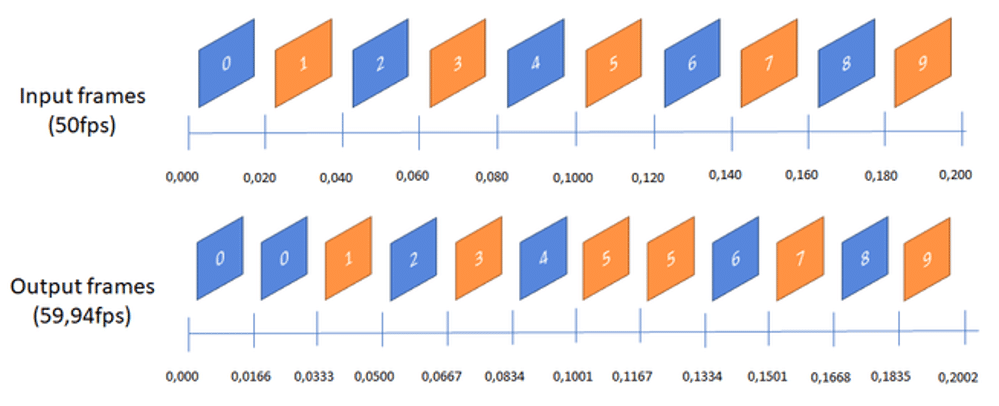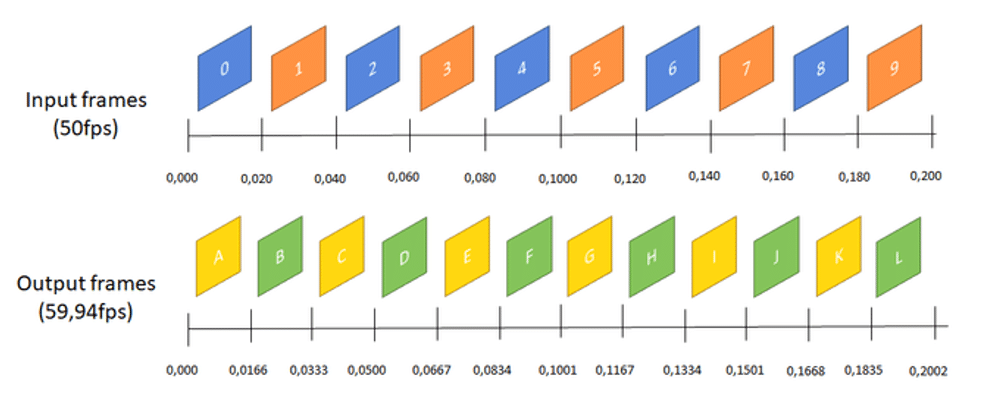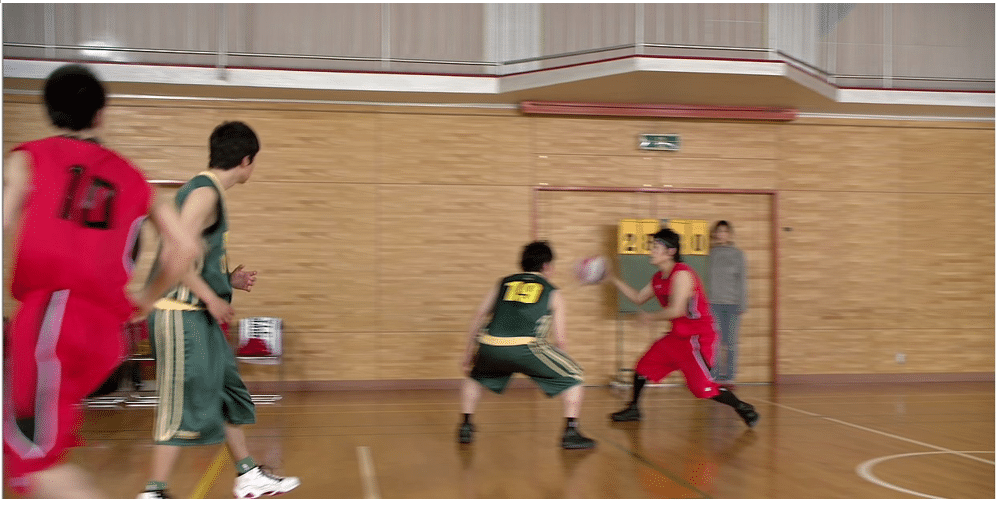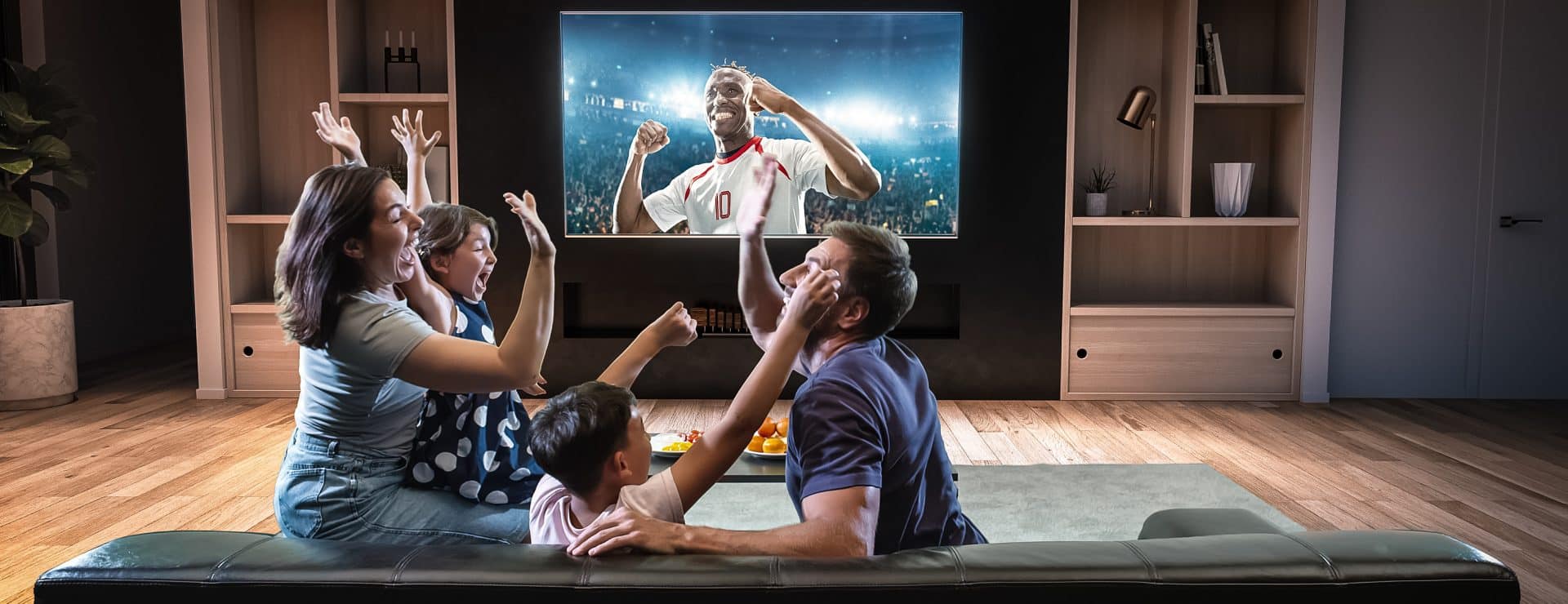Frame-rate conversion can have a huge impact on the quality of a sports match you watch on TV – especially if you are in a different country from where the game takes place. But what exactly is it, what is available in the market, and how can that be improved?
What is frame-rate conversion?
Frame-rate conversion is the process of altering the frame rate of a video by either increasing or decreasing the number of frames per second (fps). This conversion is often necessary when transferring video between different systems or formats that use different frame rates. It is crucial in sports broadcasting, where the same content is often shown across multiple countries using different frame rates.
Does this process have an impact on the quality of the video?
Yes, frame-rate conversion can indeed impact the quality of the video. When altering the frame rate, several factors can affect video quality, resulting in a loss of detail, motion blurring, stuttering or ghosting effects. We talk about stuttering when the video appears jerky or choppy due to the change in frame rate, and ghosting when a moving object leaves behind a trail or ghost image.
How does frame-rate conversion work?
Most frame-rate converters use copy or blending frames to change the frame rate of a live feed.
Copy is the easiest way to adapt the frame rate. The result can be really good, especially in the hard telecine use case. This method of conversion uses frame drop and duplication. There are no visual artefacts, and the result is sharp. But you may suffer some stuttering in the video.

Blending is another processing method for frame-rate conversion. The result is really smooth but high-speed traveling may result in ghosting effects. This method of conversion recreates a frame from two other ones, adding some weight to each pixel. The nearer a frame’s timestamp is to that of the frame to be created, the more weighted its pixels will get.

Ghosting effect
Combining these two methods, Ateme offers a Smart Blending Copy mode. Instead of always blending or duplicating, this algorithm copies the picture temporally to the nearest frame and adds some blends at strategic moments to soften the feeling of temporal spacing variability. The result is more acceptable visually than just copy or just blending, but you still get some stuttering and some diluted ghost effects in a high-motion scenario.
What challenges do broadcasters face regarding frame-rate conversion?
Most frame-rate converters are hardware-based. Indeed, baseband content manipulation has always been hardware-based due to the huge amount of data to process. However, this presents some challenges:
- The time to market depends on a dedicated team that tailors the specific design.
- The ability to evolve is limited by the initially defined frame of the design.
- The usage and associated business model are limited to an appliance solution.
How does Ateme meet these challenges?
To meet all these challenges, Ateme introduced software baseband processing.
This reduces time to market and enables both scalability and the addition of new features. Beyond that, it also enables the use of increasingly powerful algorithms that ensure pristine quality while using optimized processing capacity. By separating the product from the underlying hardware, broadcasters are no longer locked into a specific hardware base and can therefore evolve their processing capacity as required, to deliver the best quality.
This decoupling of the software from the hardware also enables the use of the cloud to offload processing for an efficient and adapted workflow, whether using our SaaS solution – Ateme+ – or a pay-as-you-go approach during international events.
Besides the fact that it’s software-based, is there anything else that’s unique about Ateme’s implementation?
We choose motion estimation and motion compensation for the Ateme algorithm. Why? To offer the best visual result.
Our converter uses frame interpolation. This recreates what the frame would have been if the camera had taken a picture at the timestamp we need to generate. It uses hierarchical estimation coupled with iterative overlapped block motion compensation as well as temporal inpainting to handle apparitions.

The result is impressive. Sharp, smooth and an outstanding visual quality, whatever the source format and the change of regional frame rate. There is no stuttering, the static logo is stable when the background is moving, there is no ghosting effect and the scene cuts are well managed, so overall it provides an excellent visual aspect.

Ateme Premium Frame-Rate Converter
How does this new feature fit into the video-distribution workflow?
We have solutions that cover the entire distribution chain, from contribution to CDN delivery. Having an algorithm that allows you to handle 10- or even 12-bit video quality is in Ateme’s DNA. That’s how we can offer the best and most adaptable solution. It’s the same algorithm that can be used in distribution later in the distribution chain, with fewer tools activated to adapt the video quality to the use case.
With a full software solution that leads in terms of visual quality, you get both quality and flexibility in a single solution.
Combining this pristine quality result with a native 2110-based solution that is available on-prem with rock-solid SDI, as a stand-alone feature with JPEG-XS interfaces, or integrated in our decoder or transcoder solutions, but also on any software for the event-based market – for example, our SaaS solution – or enabled in any cloud per usage, you have a powerful tool to deliver the best images for any event worldwide.
How important is it for you to shorten time-to-market for your frame-rate conversion solutions? Share with us in the comments below!

